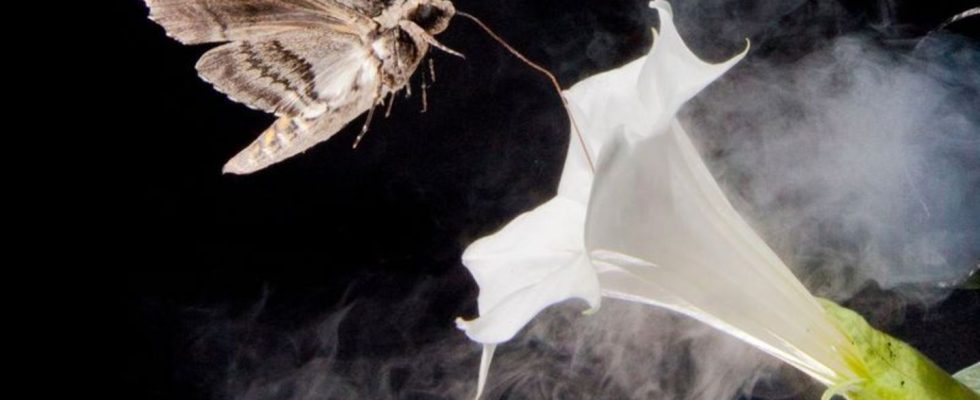Environment
Polluted air no longer allows insects to find flowers
Not only noise and artificial light influence the behavior of animals, but also substances released by humans. photo
© Floris Van Breuge/dpa
The blossom beckons, the bees come – this spectacle is ancient. But the scent of flowers is lost in polluted air, researchers report. As a result, pollinators find their way more difficult.
You can’t smell anything else because of all the exhaust fumes – this doesn’t just happen to people in big cities, but according to a study it also happens Insects. Air pollutants may be limiting pollination worldwide through their influence on fragrances, as a research team reports in the journal “Science.” Many plant pollinators travel long distances in search of food, attracted by the scents of flowers.
Not only noise and artificial light influence the behavior of animals, but also substances released by humans. Previous studies have already shown that high concentrations of diesel exhaust gases or ground-level ozone can impair the ability of insects to detect odors, explains the team led by Joel Thornton and Jeffrey Riffell from the University of Washington. Oxidizing agents such as ozone (O3) and the nitrate radical (NO3 radical) break down certain compounds that underlie attractive floral scents.
The researchers now specifically examined the effects of ozone and the NO3 radical on the night-time pollination of evening primrose (Oenothera pallida) by moths (Hyles, Manduca) in the US state of Washington. Evening primroses exude a strong floral scent that attracts a variety of pollinators. Approximately 300 flowers were observed over a total of 200 hours. In addition, individual components of the scent, their respective effect on the moths and their degradation by ozone and the NO3 radical were examined.
The number of flower visits falls by around 70 percent
The team’s field observations and laboratory experiments showed that the NO3 radical – the predominant oxidant at night in many regions – rapidly breaks down certain fragrances. Individual so-called monoterpenes, which are particularly attractive to the butterflies, are particularly affected. As a result, the flowers are hardly or no longer noticeable to the nocturnal butterflies. The number of flower visits by moths has fallen by around 70 percent. As a result, evening primrose fruit production is reduced by around 30 percent.
According to the analyses, O3 had a smaller effect at night than the NO3 radical. Ozone is formed near the ground during the day through a complex mechanism that, in addition to intense solar radiation, primarily involves hydrocarbons and nitrogen oxides. The NO3 radical, on the other hand, decays under the influence of sunlight. At night, the reaction of ozone with nitrogen dioxide (NO2) can produce large amounts of the NO3 radical.
Using a global model, Thornton and Riffell’s team also showed that O3 and NO3 radical pollution in the atmosphere in many urban and peri-urban areas is sufficient to significantly reduce the distances over which pollinators can see flowers. In certain populated regions around the world, scent detection distances have decreased by 75 percent or more since pre-industrial times, the team concludes from modeled comparisons. The scientists suspect that air pollutants could have a decisive influence on pollination and yields.

